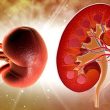Courtesy of Dr Carlos Fava. The association of primary angioplasty with multivessel lesions is not infrequent and has been analyzed in various studies and meta-analyses. However, the proper course of action remains unclear. According to this study, fractional flow reserve (FFR) could better define the ischemic impact of lesions and help with the identification of...
Best Strategy for Acute MI and Multivessel Disease
The goal of this study was to assess all available revascularization strategies for patients undergoing ST elevation acute myocardial infarction and multivessel disease. Among the strategies to treat this group of patients, there were: culprit vessel intervention only, culprit vessel intervention and, in case of success, multivessel intervention, culprit vessel intervention with staged revascularization,...
ACS and Multivessel Disease: How to proceed
Gentileza del Dr. Javier Castro In the daily practice, a high percentage of ST elevation myocardial infarction patients (STEMI) present multivessel disease (40-65%). This group of patients presents worse clinical evolution and higher mortality than patients with one culprit lesion. When PCI is indicated to a patient with significant lesions in more than...
Surgery vs. PCI in Diabetic Patients with Multivessel Disease
Original Title: Revascularization in diabetics with multivessel disease: a population-based evaluation of outcomes. Presenter: Ramanathan K. Real-world data support the role of CABG over PCI in diabetic patients with multivessel disease. However, PCI continues to be a common option for this patient population, according to an analysis of 2 Canadian registries. Sourcing data from 2...
FREEDOM trial: CABG versus angioplasty treatment for diabetic patients with multivessel disease
The trial included 1,900 patients followed for at least 2 years, (mean 3.8 years), randomized 1:1 to pharmacological angioplasty stents, (sirolimus or paclitaxel at surgeon discretion), or CABG. We excluded acute coronary syndromes and left coronary trunk injury. The primary endpoint was death, myocardial infarction or stroke and the secondary main was the sum of...
Is the 2nd generation DES an alternative to surgery in multivessel coronary disease?
The benefits of 2nd generation drug-eluting stents (DES) are being compared with Coronary artery bypass graft surgery (CABG), looking to achieve a safe, effective, less invasive and as complete as possible revascularization. As background of SYNTAX, the stent thrombosis (ST) with Taxus, reached 25% of the events in the group of intervention (PCI), so that...
Diabetics with multivessel, must keep waiting.
Original title: Strategies for Multivessel Revascularization in Patients with Diabetes. The FREEDOM Trial. Reference: Michael E. Farkouh et al. N Engl J Med 2012. DOI: 10.1056/NEJMoa1211585 This study was designed to determine the best revascularization strategy in diabetic patients with multivessel using current techniques of angioplasty (PCI) and surgery (CABG). Randomized 1:1 diabetic patients with injuries > 70%...
Global Risk Score for stratification of patients with multivessel coronary artery disease: A wider look
Reference: Serruys et al J Am Coll Cardiol Intv 2012;5:606–17 SYNTAX Analysis study demonstrates the utility of a new risk score for patients stratification with left main coronary artery or multivessel disease. Numerous studies have demonstrated the value of SYNTAX score to stratify risk of angioplasty and decision-making (angioplasty versus surgery) in patients with multivessel...
Selecting Renal Denervation Responsive Patients: Meta-Analysis of Observational Data
Hypertension treatment has evolved considerably over time. However, managing adverse events driven by medication is still challenging, as is low patient adherence, be it because of polimedication or associated costs. Approximately 10% of patients do not reach optimal blood pressure targets, despite adherence optimal medical treatment (OMT); this condition is known as resistant hypertension. Renal...
Revascularization Timing in Acute Coronary Syndrome
Multivessel disease is often present in ST elevation acute myocardial infarction (STEMI) patients. The AHA/ACC 2021 revascularization guidelines recommend staged complete revascularization as class I, single-setting complete revascularization as class 2b, and recommend against culprit only revascularization. At present, we have more randomized studies (BIOVASC, FIRE and MULTISTAR) comparing staged vs single-setting complete revascularization, but...







